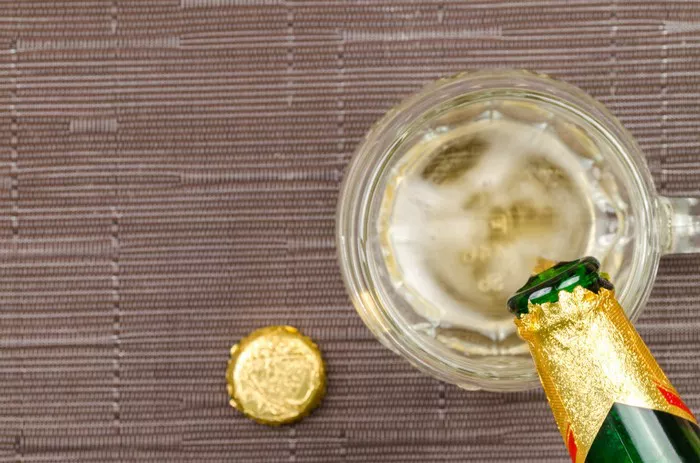In recent years, White Claw has surged in popularity, becoming a go-to beverage for many. Its crisp taste, low calorie count, and refreshing fizz have made it a favorite among those seeking a lighter alternative to traditional beer. However, one question frequently arises: Does White Claw have more alcohol than beer? In this article, we delve into this inquiry, exploring the alcohol content of White Claw compared to beer and examining various factors that contribute to their differences.
Understanding Alcohol by Volume (ABV)
To comprehend the alcohol content of White Claw versus beer, it’s essential to grasp the concept of Alcohol by Volume (ABV). ABV represents the percentage of alcohol in a given volume of liquid. For instance, a beverage with an ABV of 5% contains 5% alcohol and 95% other substances, such as water, malt, or fruit juice. This metric serves as a standard measure of alcoholic strength across various beverages.
Comparing ABV in White Claw and Beer
White Claw typically boasts an ABV ranging from 4% to 6%, depending on the flavor variant. Conversely, the alcohol content in beer can vary significantly based on its type, brewing method, and brand. While some light beers may have a lower ABV of around 4% to 5%, craft beers and ales often feature higher ABV percentages, sometimes reaching 10% or more.
Factors Affecting Alcohol Content
Several factors influence the alcohol content in White Claw and beer, contributing to their respective ABV levels. These factors include ingredients, fermentation process, and serving size.
Ingredients:
White Claw is a type of hard seltzer, typically made from a base of carbonated water, alcohol derived from fermented sugars, and flavorings. The alcohol in White Claw primarily comes from fermented cane sugar or malted barley. In contrast, beer contains water, malted barley or other grains, hops, and yeast. The alcohol in beer results from the fermentation of sugars in the malted barley or grains.
Fermentation Process:
The fermentation process plays a crucial role in determining the alcohol content of both White Claw and beer. In White Claw production, sugar is fermented to produce alcohol. The fermentation process in beer brewing involves the conversion of sugars in the malted barley into alcohol and carbon dioxide by yeast. The duration and conditions of fermentation influence the final ABV of the beverage.
Serving Size:
Another aspect to consider is the serving size. White Claw is typically sold in 12-ounce cans, while beer is available in various container sizes, including bottles, cans, and draft servings. The alcohol content per serving can vary based on the volume consumed. Therefore, it’s essential to compare the ABV per volume to make accurate assessments.
Regulatory Guidelines
Regulatory guidelines also impact the alcohol content of White Claw and beer. In the United States, the Alcohol and Tobacco Tax and Trade Bureau (TTB) regulates the labeling and production of alcoholic beverages. Both White Claw and beer must adhere to TTB regulations regarding ABV disclosure on product labels. These regulations ensure transparency and accuracy in alcohol content information provided to consumers.
Consumer Preferences and Trends
Consumer preferences and trends significantly influence the popularity of White Claw and beer. In recent years, there has been a growing demand for low-calorie, flavorful alcoholic beverages, driving the success of products like White Claw. Many consumers opt for White Claw due to its light and refreshing taste, as well as its lower calorie count compared to beer. However, beer remains a staple in many cultures, appreciated for its diverse flavors, styles, and brewing traditions.
Health Considerations
When considering whether White Claw has more alcohol than beer, it’s essential to factor in health considerations. While White Claw may offer a lower calorie option for those watching their intake, moderation is key when consuming alcoholic beverages. Excessive alcohol consumption can lead to various health issues, including liver damage, impaired judgment, and addiction. It’s crucial for individuals to consume alcohol responsibly and be mindful of their limits.
Conclusion
In conclusion, the question “Does White Claw have more alcohol than beer?” can be answered by comparing their respective ABV levels. White Claw typically contains an ABV ranging from 4% to 6%, while the alcohol content in beer can vary widely depending on factors such as type, brewing method, and brand. Various factors, including ingredients, fermentation process, and serving size, contribute to the alcohol content of both beverages. Regulatory guidelines ensure transparency in ABV disclosure, allowing consumers to make informed choices. Ultimately, whether one chooses White Claw or beer depends on individual preferences, dietary considerations, and occasion. Regardless of choice, responsible consumption is paramount to maintaining health and well-being.


